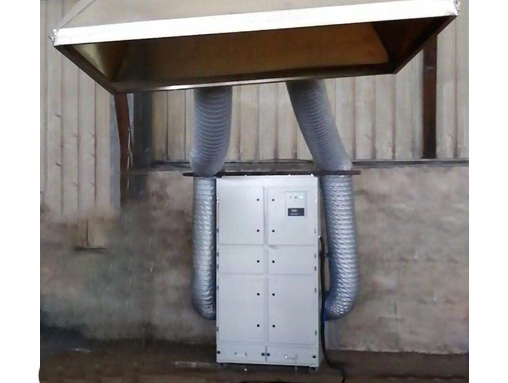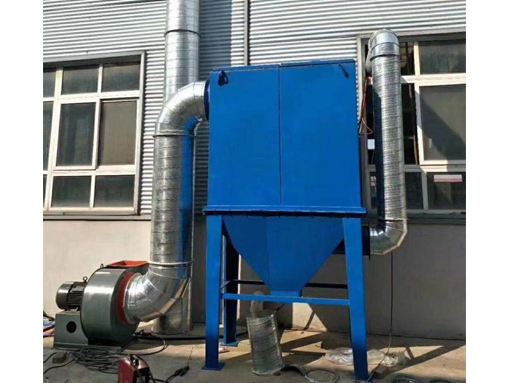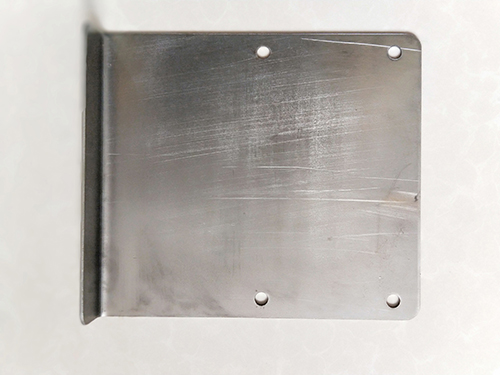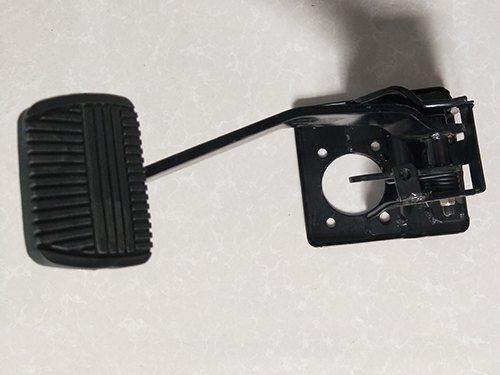Reasons and preventive measures for burr defects in metal stamping parts during
Stamping is a forming and processing method that uses a press and mold to apply external force to sheets, strips, pipes, and profiles, causing them to undergo plastic deformation or separation, in order to obtain the desired shape and size of the workpiece (stamped part). Stamping technology can be divided into two categories: separation process and forming process. With the development of the automotive industry, people's demand and quality requirements for cars have greatly increased. Common defects in stamping production include punching burrs, deep drawing cracks or ruptures, wrinkling, bending rebound, pulling, scratches, etc. Due to the large-scale production of stamped parts, any problems will result in losses for the batch. Therefore, it is important to have an understanding of the various defects that may occur during stamping, and to conduct a thorough analysis of the causes of these defects and propose corresponding preventive measures.
Causes and preventive measures of burr defects in punching and cutting
Burr: The part of the stamping cut surface that is higher than the material, which occurs along the stamping direction or may be generated after extrusion. Burrs are generally controlled within 0.2mm; In sheet metal punching, it is generally difficult to avoid the occurrence of varying degrees of burrs. However, improving the processability and stamping conditions of the parts can reduce burrs.
1. The punching gap is too small, too large, and uneven, resulting in the generation of burrs
(1) The punching gap is too small. During the punching process, the tensile stress in the material decreases, the extrusion force increases, and cracks are generated. There is a secondary shear phenomenon around the punching end face, and some materials are extruded to form high and thin burrs on the surface of the material. (2) The punching gap is too large. During the punching process, the tensile stress of the material increases, the extrusion force decreases, and cracks are prone to occur. The plastic deformation stage ends prematurely, and the cracks are shifted inward, resulting in material separation later by tensile fracture; Therefore, the bright band becomes smaller, the fracture zone, collapse angle, and burrs increase, and high and thick burrs appear around it, which are difficult to remove. (3) Uneven punching gap. Whether the gap is too large or too small, burrs will be generated. Triangular burrs appear in most of the gaps, with high and thick burrs; High and thin burrs appear in the small gap.
2. Quality defects in the concave convex mold lead to the generation of burrs
(1) Mold blade wear. When mass production is carried out, when the cutting edge of the mold wears into rounded corners and becomes dull and not sharp, the contact area between the cutting edge and the material increases, the squeezing effect is greater, and the generation of cracks is delayed. The bright band of the stamped part becomes wider, the rounded corners become larger, and the burrs become larger. Even if the gap is reasonable, large burrs will still be generated; The convex mold becomes dull, and the burrs on the dropped parts increase; The concave die becomes dull, and the burrs on the stamped parts increase; If both the concave and convex molds become dull, the burrs on the dropped and stamped parts will increase. (2) The verticality of the concave mold decreases, the cutting edge of the concave mold becomes tapered, and the grinding of the concave mold exceeds the tolerance. Due to manufacturing reasons and other factors, the concave die blade has a taper, which causes deformation during the discharge of the workpiece due to compression, resulting in significant burrs, collapse angles, and slopes on the punched end face. (3) Due to local blade wear or poor heat treatment effect of the concave convex mold, local blade breakage may occur, resulting in excessive punching clearance and uneven burr size and height.
3. Preventive measures for burr defects
(1) Add guiding mechanisms such as guide columns and guide sleeves to the mold. (2) Regularly inspect stamping equipment and mold accuracy. (3) Repair the mold to make the concave mold edge a straight wall or a positive taper. (4) Regularly inspect the concave convex mold blade to keep it sharp. (5) During the production process, the quality of burrs and other end faces of stamped parts should be inspected first and last, and any abnormalities should be promptly repaired or replaced with convex and concave molds.
Metal stamping parts; Widely applied in various aspects of our lives.
The stamping parts designed meet the requirements of product usage and technical performance, and are easy to assemble and repair.
The stamping parts designed are conducive to improving the utilization rate of metal materials, reducing the variety and specifications of materials, and minimizing material consumption as much as possible. If possible, use inexpensive materials to achieve zero waste and minimal waste cutting of parts.
The designed stamping parts have a simple shape and reasonable structure, which is conducive to simplifying the mold structure and reducing the number of processes. This means that the entire part can be processed with fewer and simpler stamping processes, reducing the need for other methods of processing. It is also conducive to stamping operations, facilitating the organization to achieve mechanization and automation production, and improving labor productivity.
The stamping parts designed should have lower requirements for dimensional accuracy and surface roughness levels as much as possible under normal use, and be conducive to product interchangeability, reducing waste and ensuring stable product quality.
The stamping parts designed should be conducive to using existing equipment, process equipment, and process flow as much as possible for processing, and should also be conducive to extending the service life of the stamping die.
The reasons and solutions for surface scratches on metal stamping parts are as follows:
1. When continuous bending is carried out on soft materials such as copper and aluminum alloys, metal particles or slag are prone to adhere to the surface of the working part, causing significant scratches on the workpiece. At this time, careful analysis and research should be conducted on the shape and lubricating oil of the working part to prevent particles and slag from appearing on the blank, which may result in scratches.
2. When the bending direction of metal stamping is parallel to the rolling direction of the material, cracks will appear on the surface of the workpiece, resulting in a decrease in the surface quality of the workpiece. When performing metal stamping bending on two or more parts, the bending direction of the metal stamping should be at an angle as close as possible to the rolling direction.
3. When the burr surface is used as the outer surface for metal stamping and bending, the workpiece is prone to cracking and scratching; Therefore, when metal stamping and bending, the burr surface should be used as the inner surface of the metal stamping and bending.
4. The radius of the concave die corner is too small, and there are impact marks on the bent part of the metal stamping. Polishing the concave die and increasing the fillet radius of the concave die can prevent scratches on metal stamping bent parts.
5. The gap between the convex and concave molds should not be too small, as a small gap can cause thinning and scratching. During the stamping process, it is necessary to constantly check the changes in the clearance of the mold.
6. When the convex mold enters the concave mold too much, it will cause scratches on the surface of the part. Therefore, without being affected by rebound, the amount of convex mold entering the concave mold should be appropriately reduced..
7. In order to meet the accuracy requirements of the parts, metal stamping and bending dies are often used for bottom pressing. Therefore, during the metal stamping and bending process, the springs, positioning pin holes, support plates, and return holes on the pressing plate will be pressed into indentations, so adjustments should be made.
Stamping parts require specific knowledge and content in production, so we need to learn, understand, and master them in order to have a concrete understanding of stamping parts production and be able to carry out practical operations well, in order to produce high-quality stamping parts with good performance.
1. Steps and processes of stamping production
For the production of stamped parts, the specific steps and processes mainly include:
Step 1: Determine the reasonable and correct amount of deformation compensation for stamped parts based on the material used and product structure.
Step 2: Based on the determined compensation amount, design the relevant molds, and then punch out semi-finished or finished products.
Step 3: Further process the stamped semi-finished or finished products, mainly checking for defects or adverse phenomena such as wrinkling, pulling, and cracking. Also, whether the thickness of the finished product is uniform and whether its molding effect is good. If there are any problems, they should be dealt with and resolved in a timely manner.
2. Tapping and threading during the production process of stamped parts
For the tapping and threading processing in the production process of stamped parts, it mainly involves two aspects: internal threads and external threads.
For internal threads, it is generally necessary to drill the diameter of the bottom hole and perform machining on it. The size of the bottom hole is mainly determined based on the thread specifications. For external threads, it is necessary to perform thread turning with a thread cutter or threading with a die. In addition, some specific issues should be noted during this process, such as inconsistent dimensions and unqualified thread gauge inspection.
3. Common problems in the production process of stamping parts
During the production of stamped parts, there may be some common problems, so the following examples are given.
Wear on the cutting edge: The specific reason may be due to excessive tensile stress on the material, which causes distortion and flipping of the stamped parts.
Deformation of the end of the convex die blade: For this problem, the cause may be insufficient punching force, resulting in the end being trimmed into a slope or arc shape, which leads to deviation in punching size, such as excessive size. Furthermore, a series of problems such as deformation occurred at the end of the convex die blade.







